August 18, was Sunday and in the ancient and splendid churches and cathedrals of Kiev resounded the evocative melodies of prayers and rites, intoned by the popes of the Ukrainian Orthodox Church, independent and separate from that of the Moscow Patriarchate.
I enter the Cathedral of St. Vladimir during the Eucharistic celebration and, judging by the tiara, the age and the solemnity of the gestures, the Patriarch of Kiev himself could be presiding over the concelebration.
There are mostly women, veiled as we did a few decades ago, and men who are generally old or very young.
Practically everyone, before, during and after the celebration, crowds in front of a counter and hands out lists of names, along with money, as is customary in our country for prayers of intercession, but the amount changes, which is truly impressive. At the same time, long, thin candles are purchased, typical of Orthodox churches, which everyone lights, and each has more than one in their hands.
Of course it is an ancient rite, but it is unthinkable not to see a relationship between many of the hands that place a lit candle and a father, a son, a grandson, a friend at the front, constantly in danger or even already dead. I cannot be certain, but I can intuit it from the faces, from the looks.
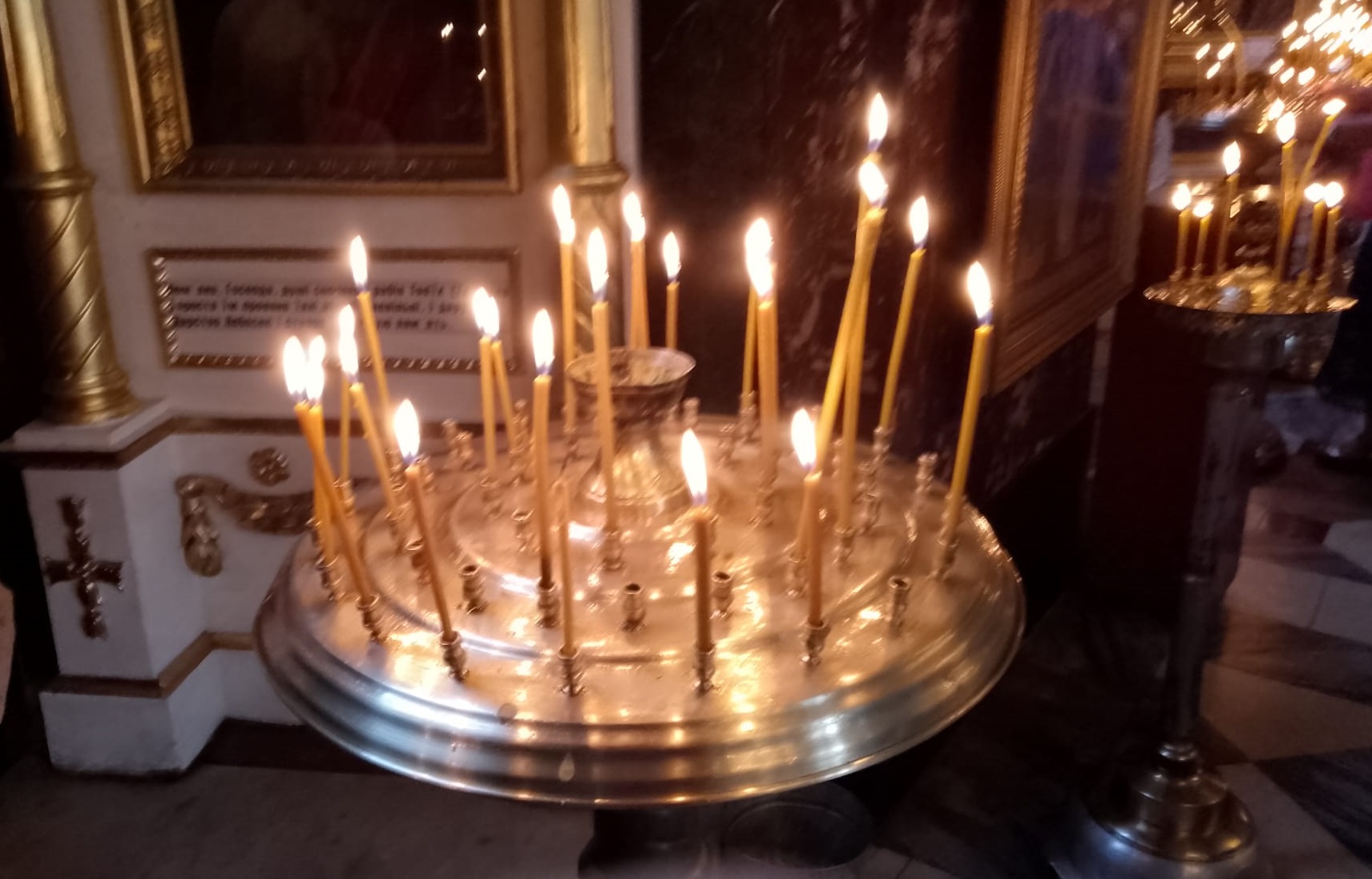
For the rest, my day yesterday could be a moment of rest for a traveler (I hate the term tourist) curious and enchanted by the beauty of this city, between large crowded parks and splendid churches, squares and palaces.
A distracted tourist would not notice the signs of war: all the monuments have been “boxed up” to keep them safe and the basement of a building has its windows covered with sandbags to transform it into a safe refuge.

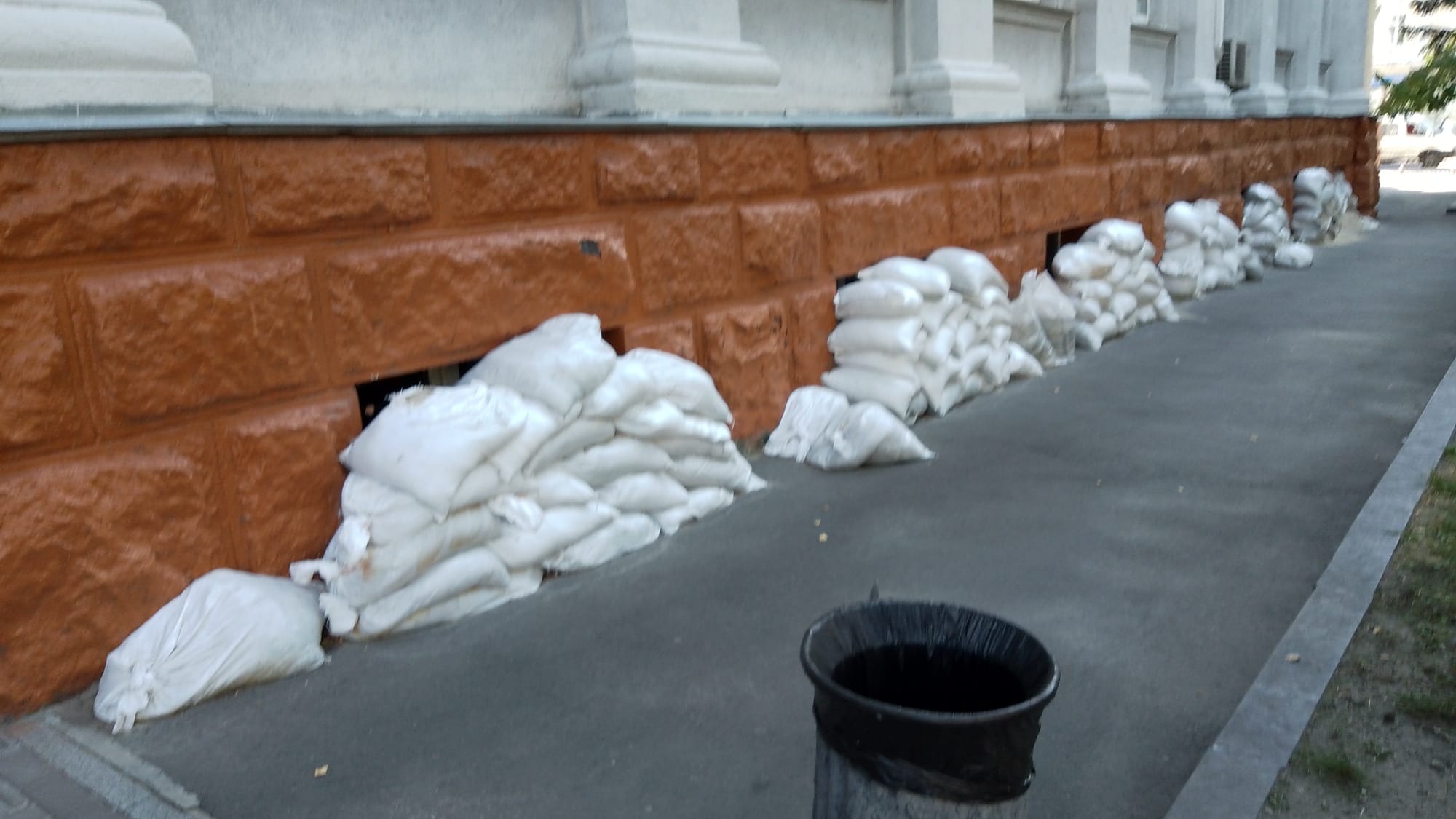
Then, when you least expect it, in one of the main squares of the historic centre, where the great cathedrals of Saint Sophia and the monasteries stand, war appears, here exhibited but also confined, in all its horror and pain: in fact, there are some armoured vehicles, on which two children are climbing and playing undisturbed, two cars and a minibus, half destroyed and half charred by the flames.

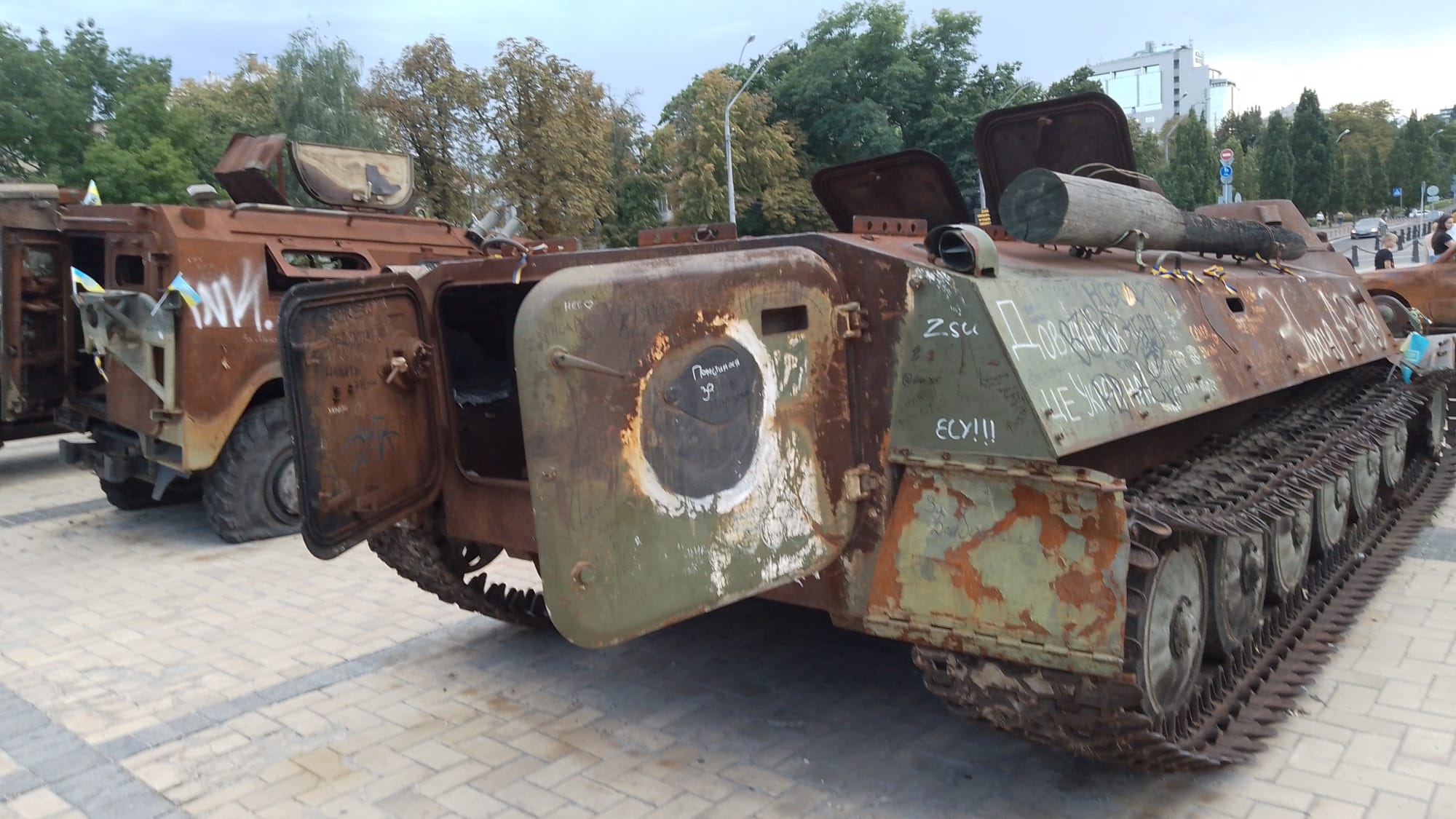
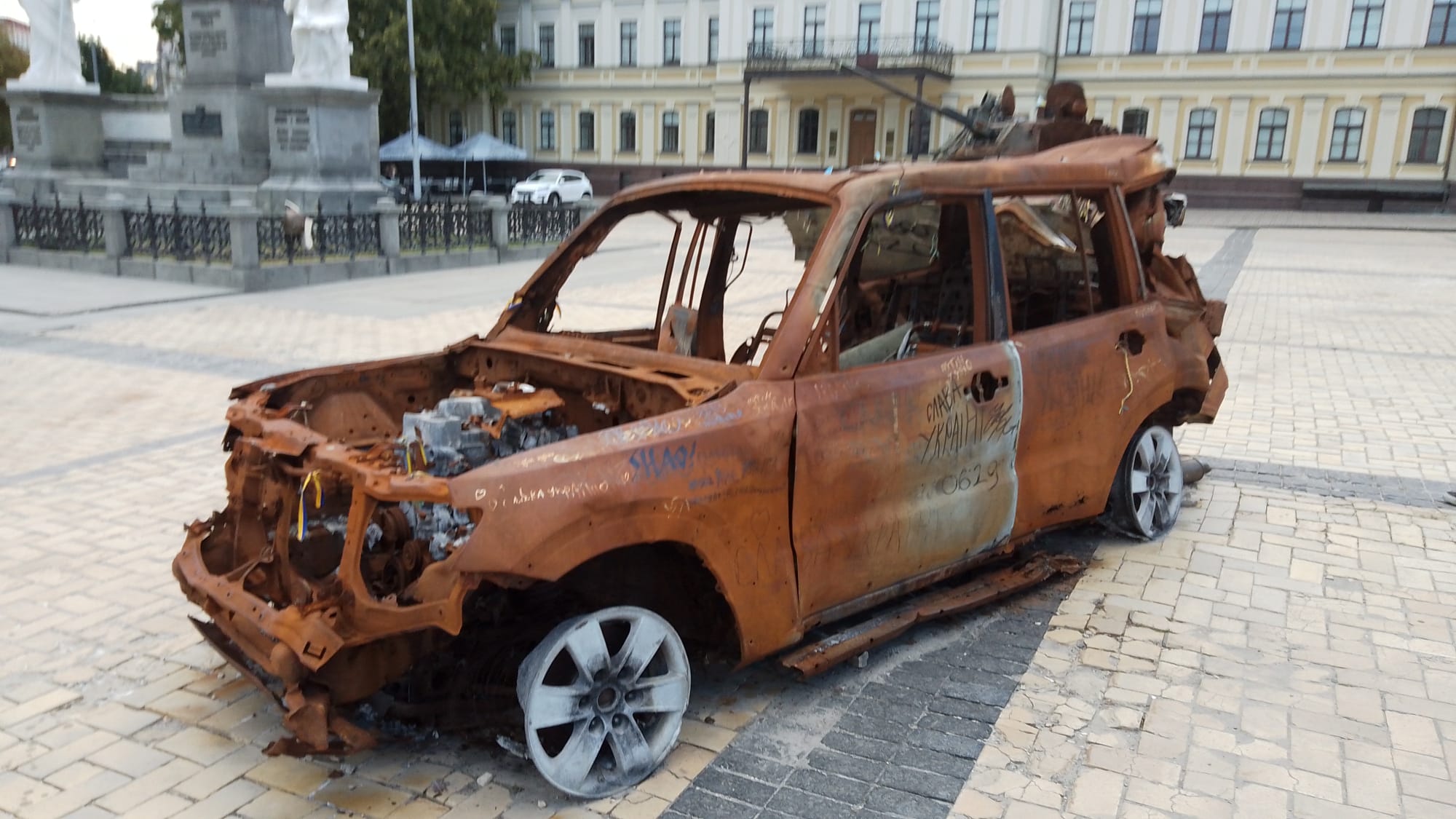
From the hanging flags and the ribbons tied in the national colours, blue and yellow, and from the photos displayed on the dashboard of the van, it is clear that these are Ukrainian vehicles and that they are a tribute to their defence forces and to the civilians who died in the conflict, as the panels with eloquent and dramatic photos nearby testify.
On the opposite side of the square are displayed the half-melted remains of explosive devices fired on Kiev or its surroundings… and let’s hope no more will have to be added.
But the most terrible thing, which I will return to write about in more detail, after having informed myself better, is the very long wall of the monastery of St. Michael, with the photos and the related personal data of the soldiers who died since the beginning of the war, which here too, correctly, starts from the outbreak of the civil war for the control of Donbass in April 2014, then transformed, starting from February 24, 2022, into the current war against the Russian Federation.
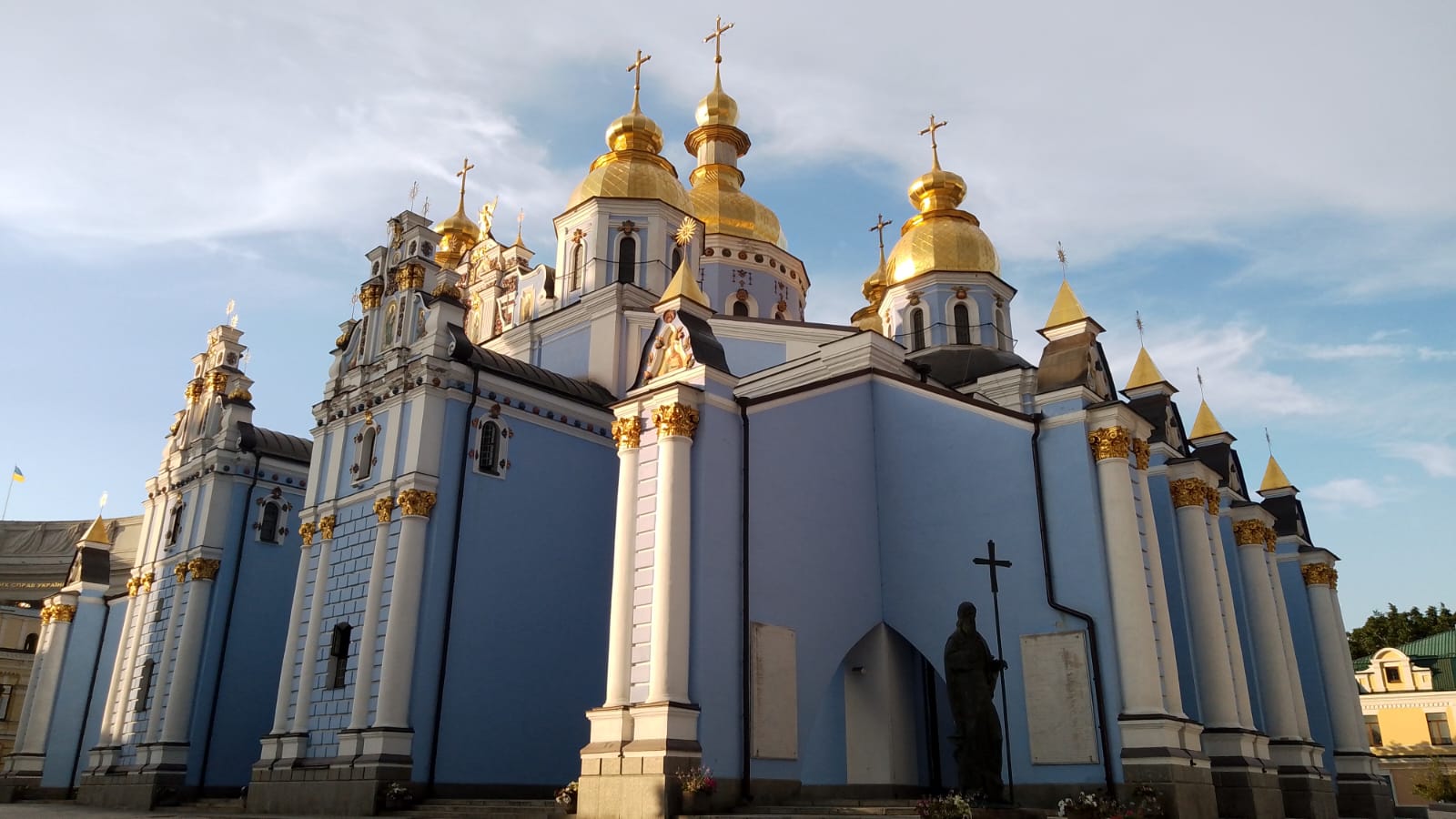
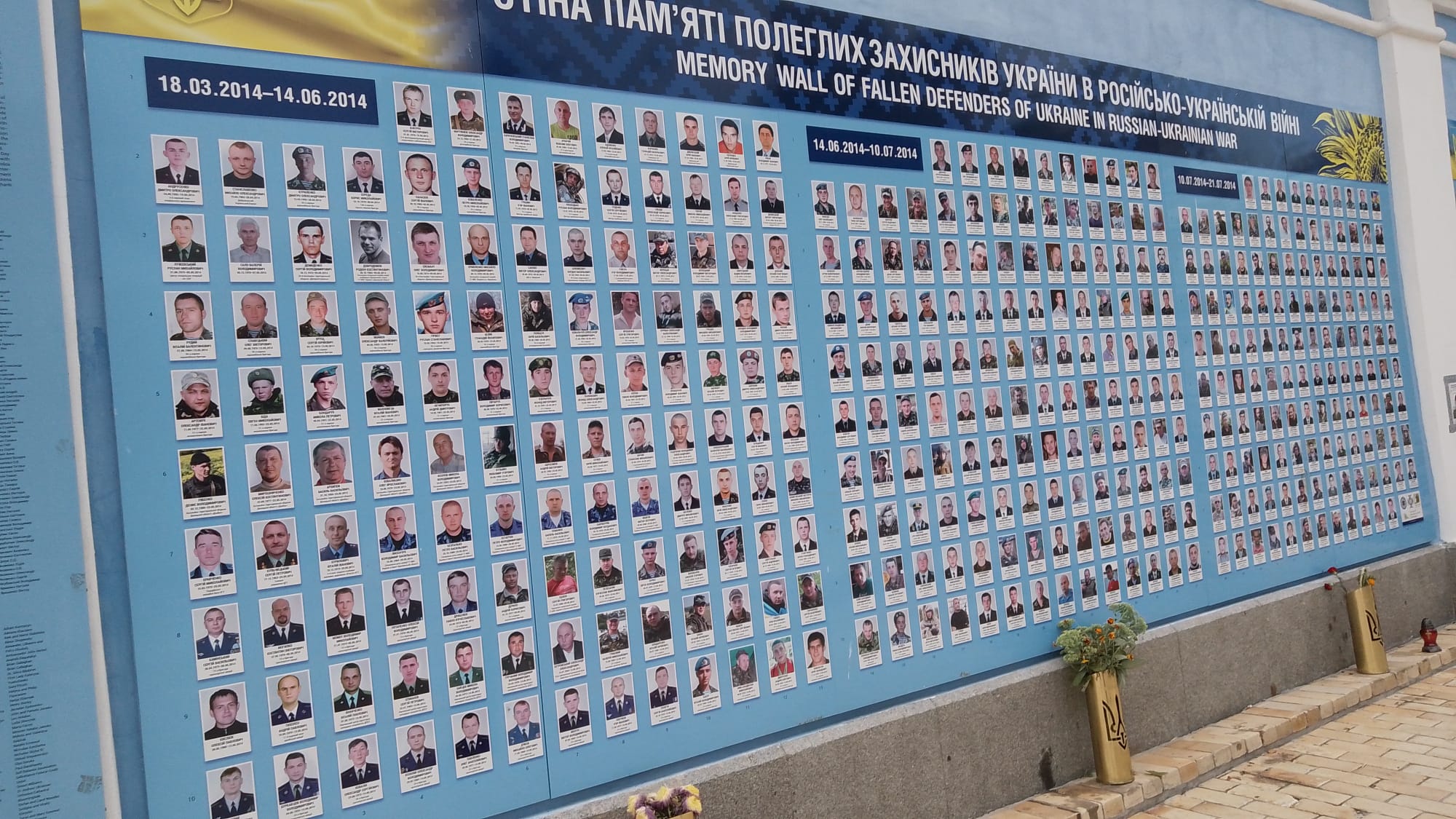
It is a very long wall with thousands of photos, under which real or plastic flowers are placed. Almost only men, some young, others older. The very few girls stand out among the many male faces.
For the first years of the war, the photos are all the same and regular, then for these last two years, the regularity and officiality are replaced by the merciful hands of family members and friends, who wanted to remember their loved ones here with less formal photos.
These eyes are war: some smiling, some serious, some worried, they look at you and are no longer there.
As the great Vittorio Arrigoni used to say, “let’s stay human”: let’s not give in to cynicism and impotence, let’s not allow this series of deaths on both sides of the front to continue any longer.
Cease-fire!
Mauro Carlo Zanella , resident in Rome for over thirty years, elementary school teacher in Trullo, a historic neighborhood of Rome and now one of the most multiethnic neighborhoods of the capital. I am part of the Anpi “Franco Bartolini” section and of the choir and theater group connected to it. I have always been a member of the Communist Refoundation Party and before that of Proletarian Democracy. Conscientious objector with Pax Chisti in the early 1980s, I took part in the struggles against the installation of Euromissiles in Comiso and in the protests










